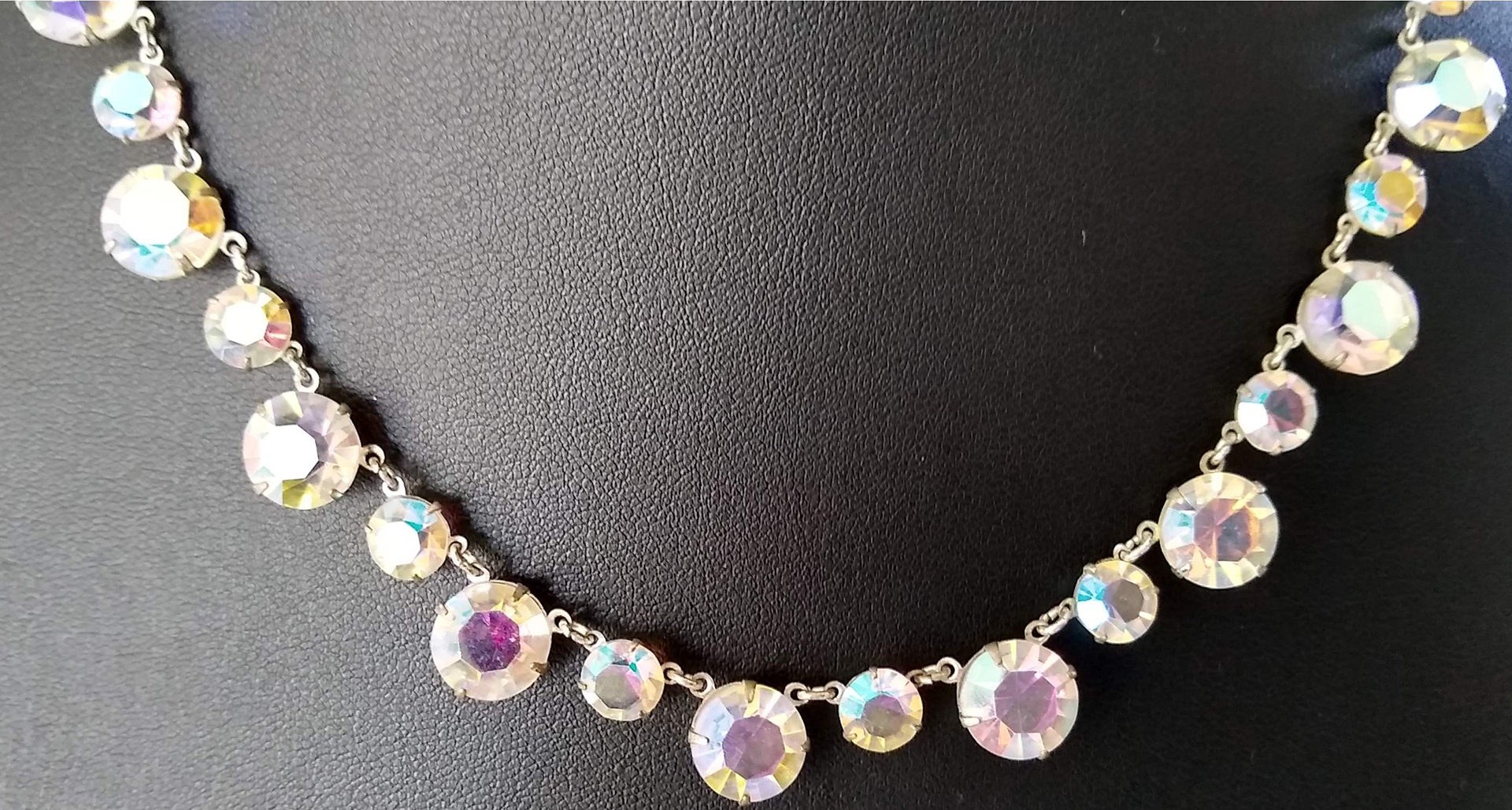

Jewellery as a Symbol In Society
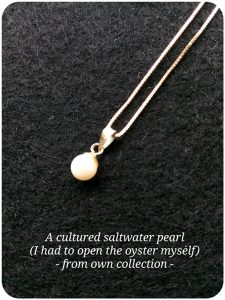 People have been wearing jewellery for many different purposes during thousands of years. Of course, jewellery can be used for functional reasons, like a clasp, a buckle or a brooch to keep clothes together and hair pins to keep your hair in place. However, there are many more reasons why people wear jewellery and some of these reasons might not always be so obvious in the first place, unless you know more about the cultural backgrounds or intentions of certain civilizations or groups of people or about a specific person in particular.
People have been wearing jewellery for many different purposes during thousands of years. Of course, jewellery can be used for functional reasons, like a clasp, a buckle or a brooch to keep clothes together and hair pins to keep your hair in place. However, there are many more reasons why people wear jewellery and some of these reasons might not always be so obvious in the first place, unless you know more about the cultural backgrounds or intentions of certain civilizations or groups of people or about a specific person in particular.
Besides a functional use of wearing jewellery, on lots of occasions people wear a jewellery item just to look pretty and adorn oneself with it, especially in these modern times. In this blog I want to focus more on all the other forms and reasons why people would wear jewellery.
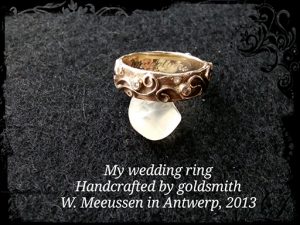 A very specific reason can be that someone wears jewellery as a marker of social or personal status. A good example of this is the wedding or engagement ring. A wedding ring shows that the wearer has a certain connection with someone special in his or her life. It is a visual display of the social status of marriage or bonding with one person in particular, with whom the wearer forms a couple. In many civilizations wedding bands are worn on the ring finger of the left hand. People used to believe that the left hand had a connection closest to the heart (which you can feel beating best on the left side of your bosom), which made the ring finger the one to wear a ring of such importance. A ring was chosen to show this special bond, because the round shape of a ring shows ongoing eternal love.
A very specific reason can be that someone wears jewellery as a marker of social or personal status. A good example of this is the wedding or engagement ring. A wedding ring shows that the wearer has a certain connection with someone special in his or her life. It is a visual display of the social status of marriage or bonding with one person in particular, with whom the wearer forms a couple. In many civilizations wedding bands are worn on the ring finger of the left hand. People used to believe that the left hand had a connection closest to the heart (which you can feel beating best on the left side of your bosom), which made the ring finger the one to wear a ring of such importance. A ring was chosen to show this special bond, because the round shape of a ring shows ongoing eternal love.
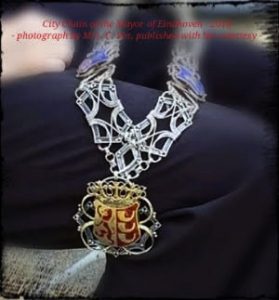
In Western societies the so-called “first citizen” of a town, the mayor, shows his or her status sometimes visually by wearing a certain jewellery chain on special occasions. Although these necklaces are most often definitely not practical to wear, especially not on an everyday basis because of their massive size and weight, they do show the importance of the mayor as head of a city council during the times they wear these chains. The mayor’s chain can be compared to, for example, the impressive headdress and other distinctive jewellery which the native Indians wore when they met with western people who invaded their lands during colonial times in the Americas. It is a clear display of their social status within the group they belong to.
Another example of jewellery items that show social and personal status, are the crown jewels of royal families. These pieces are most often only worn during specific occasions or special celebrations. They point out the importance of the royal members as well as their hierarchical status within these families. The crown of a king or queen will be larger and more decorated that the tiara of a princess or other member of the family. It shows that the first ones mentioned are more important within the hierarchy of the family. Although crown jewels are often quite imposing and beautifully decorated with expensive materials, they are also heavy and probably not as comfortable to wear. Fortunately, kings and queens do not have to wear these precious jewels often and for less important events than for example a coronation, they might choose smaller and more practical crowns and tiaras to show their obviously special status.
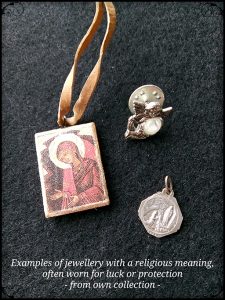 Sometimes the meaning or purpose of certain jewellery items might be an overlapping one. For instance, people can wear a crucifix or small cross to show their faith and their connection to a certain group of religious believers. The crucifix or cross worn by the Pope shows this too, but his chain will probably be much larger, decorated in a unique way and only meant to be worn by the Pope himself, which shows his status within this specific group of people as their religious leader. The Pope’s crucifix or cross is therefore both a display as a status symbol as well as a form of affiliation to the group he belongs to. His jewellery might be more for display than that it is worn for its aesthetic purpose. A note on the side: the difference between a crucifix and a cross is, that on a crucifix a small image of Jesus Christ is attached to the cross, while a cross is a simple form without any symbolic figure on it.
Sometimes the meaning or purpose of certain jewellery items might be an overlapping one. For instance, people can wear a crucifix or small cross to show their faith and their connection to a certain group of religious believers. The crucifix or cross worn by the Pope shows this too, but his chain will probably be much larger, decorated in a unique way and only meant to be worn by the Pope himself, which shows his status within this specific group of people as their religious leader. The Pope’s crucifix or cross is therefore both a display as a status symbol as well as a form of affiliation to the group he belongs to. His jewellery might be more for display than that it is worn for its aesthetic purpose. A note on the side: the difference between a crucifix and a cross is, that on a crucifix a small image of Jesus Christ is attached to the cross, while a cross is a simple form without any symbolic figure on it.
Jewellery can also be worn for reasons which are very personal and foremost specifically important for the wearer, other than just being pretty or decorative. In Victorian times so-called “Mourning Jewellery” became a new trend, after Queen Victoria’s husband Prince Albert died. Queen Victoria was often seen wearing jet jewellery after her husband’s death. This sort of jewellery made it possible for her to wear jewellery, while at the same time expressing a state of mourning at the death of her husband. Her “new” style of jewellery became a real fashion and jet stones from Whitby, England, as well as other black materials were used to craft mourning adornments. Often these pieces of jewellery also contained a lock of hair of the deceased person, that was plaited, braided or twisted tightly and crafted in the design of the item. Although those styles of jewellery are no longer common, a comparison with this style is the bespoke jewellery that is created nowadays in which people insert some of the ashes of loved ones who have passed away. It could be viewed as a modern way of mourning jewellery, although these pieces are meant more as a remembrance of a deceased person than to show a state of mourning of the wearer.
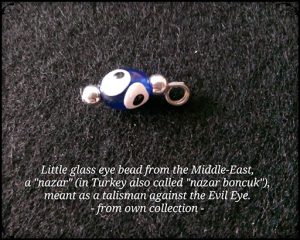 Other forms of jewellery that is worn for very personal reasons other than adornment, are talismans. Talismans can be worn for good luck, good travels, health, protection or to stave off evil. Talismans have been crafted and worn for many thousands of years, although in ancient times they might have been especially used as protection against “The Evil Eye”. Archaeologists have found talismans in all corners of the world were humans have lived. They are still crafted today, although in modern times these jewellery items are often worn as novelties in many Western societies. However, there are still plenty of people who and places where proper meaning and importance is placed to talisman protection and maybe some Western people might still do so too. I know I do myself, as I like to give dear friends and loved ones who go away on long time travels a Saint Christopher medal to keep them save on their ways or jewellery for faith and good health to loved ones who are very ill, to comfort them and let them know they are in my thoughts. I also own a talisman necklace that I bought many years ago. It has ancient Viking style runes in Elder Futhark on it, which are meant to keep the wearer safe from sudden death. I wear it when I am on a journey for a long time and it gives me kind of mental reassurance I will be fine.
Other forms of jewellery that is worn for very personal reasons other than adornment, are talismans. Talismans can be worn for good luck, good travels, health, protection or to stave off evil. Talismans have been crafted and worn for many thousands of years, although in ancient times they might have been especially used as protection against “The Evil Eye”. Archaeologists have found talismans in all corners of the world were humans have lived. They are still crafted today, although in modern times these jewellery items are often worn as novelties in many Western societies. However, there are still plenty of people who and places where proper meaning and importance is placed to talisman protection and maybe some Western people might still do so too. I know I do myself, as I like to give dear friends and loved ones who go away on long time travels a Saint Christopher medal to keep them save on their ways or jewellery for faith and good health to loved ones who are very ill, to comfort them and let them know they are in my thoughts. I also own a talisman necklace that I bought many years ago. It has ancient Viking style runes in Elder Futhark on it, which are meant to keep the wearer safe from sudden death. I wear it when I am on a journey for a long time and it gives me kind of mental reassurance I will be fine.
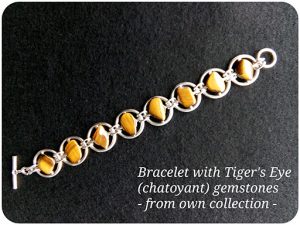 A special purpose for wearing jewellery in great parts of the world, that has been going on since ancient times, is as dowry. Although nowadays the payment of dowry is prohibited in most countries, e.g. in India by the specific Dowry Prohibition Act of 1961, dowries are still being asked in some places around the world, such as with the Madhesi people in Nepal and in some rural areas in e.g. Afghanistan, Pakistan, Morocco, Egypt, Turkey et cetera. Even in India itself, despite the Dowry Prohibition Act of 1961 that criminalises dowry by law, taking or giving dowry is still a significant part of marriage. Dowry is most common in places where inheritance laws are quite inadequately male-based and where women are expected to live with or close by their husband’s family. Dowry exists of more than just jewellery, but jewellery is practically always part of dowry. During my time as a graduating sociology researcher Leisure Studies at the Tilburg University, I spent some time in Ecuador in 1997. Here I met with native Indians in Otavalo, a famous indigenous market town in the Andes mountains with a long cultural history, dating back from even before the Inca empire. Many of the native women in Otavalo and surroundings wore their traditional costume, which was finished with a large amount of beaded necklaces in mainly gold and sometimes also some red and other beads and gemstones. Nowadays these necklaces are perhaps made with inferior quality materials than in ancient times, but their intentional purpose in old times was meant as dowry. The more necklaces a woman was wearing, the higher her dowry for her new future husband and his family. These habits might no longer be applied, but the jewellery is still an important part of the indigenous outfit of the Otavaleños.
A special purpose for wearing jewellery in great parts of the world, that has been going on since ancient times, is as dowry. Although nowadays the payment of dowry is prohibited in most countries, e.g. in India by the specific Dowry Prohibition Act of 1961, dowries are still being asked in some places around the world, such as with the Madhesi people in Nepal and in some rural areas in e.g. Afghanistan, Pakistan, Morocco, Egypt, Turkey et cetera. Even in India itself, despite the Dowry Prohibition Act of 1961 that criminalises dowry by law, taking or giving dowry is still a significant part of marriage. Dowry is most common in places where inheritance laws are quite inadequately male-based and where women are expected to live with or close by their husband’s family. Dowry exists of more than just jewellery, but jewellery is practically always part of dowry. During my time as a graduating sociology researcher Leisure Studies at the Tilburg University, I spent some time in Ecuador in 1997. Here I met with native Indians in Otavalo, a famous indigenous market town in the Andes mountains with a long cultural history, dating back from even before the Inca empire. Many of the native women in Otavalo and surroundings wore their traditional costume, which was finished with a large amount of beaded necklaces in mainly gold and sometimes also some red and other beads and gemstones. Nowadays these necklaces are perhaps made with inferior quality materials than in ancient times, but their intentional purpose in old times was meant as dowry. The more necklaces a woman was wearing, the higher her dowry for her new future husband and his family. These habits might no longer be applied, but the jewellery is still an important part of the indigenous outfit of the Otavaleños.
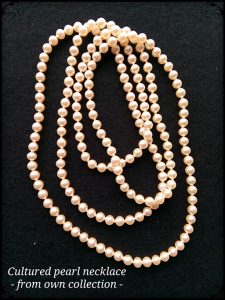 Jewellery can be used as a means of value when all other possessions are lost. There are stories that in modern times refugees, e.g. people fleeing from countries in warzones, sometimes use jewellery as a means to pay for passage to safer places. Jewellery can be worn on your body, so it is easier to take these valuables with you than furniture or bags with money. Jewellery cannot be taxed like actual money in the bank can be and some jewellery can be a real asset, since the value of some precious and unique jewellery will increase over time. It can be used as a way to secure money and sometimes even increase your investments over time. Hence, the purpose of jewellery in these cases are not for adornment, but as an investment or safekeeping of assets, equal to when it was used as dowry. A tax free hoard.
Jewellery can be used as a means of value when all other possessions are lost. There are stories that in modern times refugees, e.g. people fleeing from countries in warzones, sometimes use jewellery as a means to pay for passage to safer places. Jewellery can be worn on your body, so it is easier to take these valuables with you than furniture or bags with money. Jewellery cannot be taxed like actual money in the bank can be and some jewellery can be a real asset, since the value of some precious and unique jewellery will increase over time. It can be used as a way to secure money and sometimes even increase your investments over time. Hence, the purpose of jewellery in these cases are not for adornment, but as an investment or safekeeping of assets, equal to when it was used as dowry. A tax free hoard.
During medieval times there were some exquisitely crafted examples of jewellery with a hidden, sometimes very dark functionality. These jewellery pieces were predominantly worn by the elite classes. Throughout the Middle Ages diseases such as the Plague (commonly known as the “Black Death”), dysentery, cholera, typhoid fever, chicken pox and measles ravaged Europe. People often caught diseases due to lack of proper diet and poor hygiene. Many lived in small houses and had to sleep in rooms with livestock, such as sheep, cows and horses. These animals were a common source of fleas and bugs, which were (and are) a great source of transferring diseases. Cities and streets were covered in litter, excrements and animal corpses, resulting in the air to smell quite putrid. During this period the common idea was that the cause of the spread of disease was bad air, which they (medical doctors in medieval times) called night air or miasma, the Ancient Greek word for pollution. Instead of eliminating the source of the foul stench, people tried to cover it with sweet smelling herbs. The idea was that the pleasant scents would protect them from the terrible diseases that “lingered in the air”. The nobility and elite protected themselves by wearing so-called pomanders; small crafted jewellery balls with perfumes made of herbs, such as ambergris, lavender, rosemary, musk, civet et cetera. Perfumed pomanders were usually made of gold or silver and worn as a pendant on a chain or attached to a belt or girdle. During the Renaissance perfumed jewellery was also worn by the upper classes to hide their own bodily smells, besides the idea of protection against pestilence. The word “pomander” stems from the French word “pomme d’ambre”, which means apple of amber. Perfumers often used ambergris (or grey amber) – a waxy, solid and flammable substance with a grey colour that is produced in the digestive system of sperm whales – in creating perfumes. The substance has been highly valued by perfumers as a fixative that allows the scent to endure much longer. These pomanders were kind of an early form of aromatherapy and they were worn by both men and women. Nowadays jewellery that can contain perfume is still being made, but obviously with the better medical knowledge these items are now really meant for adornment and to spread a lovely smell.
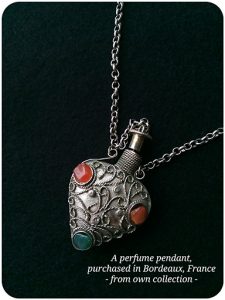 In some rare cases the reason to wear certain jewellery was a lot darker. They could, for instance, be used for political murders. An example of jewellery that was crafted for evil and murderous acts, are poison rings or pendants that could contain deadly substances, which could be added to a drink without anyone noticing. These types of jewellery were probably worn by murderous people amongst nobility and aristocrats. In 2013 archaeologists found a 600 year old bronze poison ring at the ruins of Cape Kailakra in current Bulgaria. The ring was beautifully crafted and deliberately hollowed out. Archaeologists think it was possibly imported from Italy or Spain and meant to be worn on a man’s little finger. The wearer could sneakily pour poison in a glass by just flicking his finger. Archaeologists who were working in the area where the ring was found, think that jewellery like this might explain a number of unexplained noble deaths that occurred during the specific period of time to which the excavated ring dates back to. It shows that jewellery can be used for very hidden reasons too.
In some rare cases the reason to wear certain jewellery was a lot darker. They could, for instance, be used for political murders. An example of jewellery that was crafted for evil and murderous acts, are poison rings or pendants that could contain deadly substances, which could be added to a drink without anyone noticing. These types of jewellery were probably worn by murderous people amongst nobility and aristocrats. In 2013 archaeologists found a 600 year old bronze poison ring at the ruins of Cape Kailakra in current Bulgaria. The ring was beautifully crafted and deliberately hollowed out. Archaeologists think it was possibly imported from Italy or Spain and meant to be worn on a man’s little finger. The wearer could sneakily pour poison in a glass by just flicking his finger. Archaeologists who were working in the area where the ring was found, think that jewellery like this might explain a number of unexplained noble deaths that occurred during the specific period of time to which the excavated ring dates back to. It shows that jewellery can be used for very hidden reasons too.
Fortunately, the jewellery made by Gwendolyne’s Steampunk Gems clearly has a lighter purpose than to being used as murderous and evil weapons. Although most of my jewellery is mainly worn for beauty and to show the love for the steampunk and fantasy genre, some of it also has a functional character. Besides necklaces, bracelets and earrings, I also design brooches, hairclips, cuff links and key rings. So far I have not yet been addressing the possibilities of crafting perfume jewellery in steampunk style, but who knows what the future might bring. For now my main goal is to create unique and beautiful jewellery in steampunk style, that will fit everyone who likes it and that can be worn at practically any occasion and for an affordable price.
Gwendolyne Blaney – GSG
References
References:
Wikipedia – https://en.wikipedia.org/wiki/Jewellery – “Jewellery”
Fashion Era – https://www.fashion-era.com/jewellery.htm – “Fine and Fake Jewellery”
Cooksongold – http://www.cooksongold.com/blog/trends-and-inspiration/a-history-of-jewellery – “A History of Jewellery”
Encyclopædia Britannica – https://www.britannica.com/art/ring-jewelry – “Ring; Jewelry”
Wikipedia – https://en.wikipedia.org/wiki/Talisman – “Talisman”
Wikipedia – https://en.wikipedia.org/wiki/Dowry – “Dowry”
Wikipedia – https://en.wikipedia.org/wiki/Dowry_system_in_India – “Dowry system in India”
Encyclopædia Britannica – https://www.britannica.com/event/Dowry-Prohibition-Act – “Dowry Prohibition Act; India (1961)”
